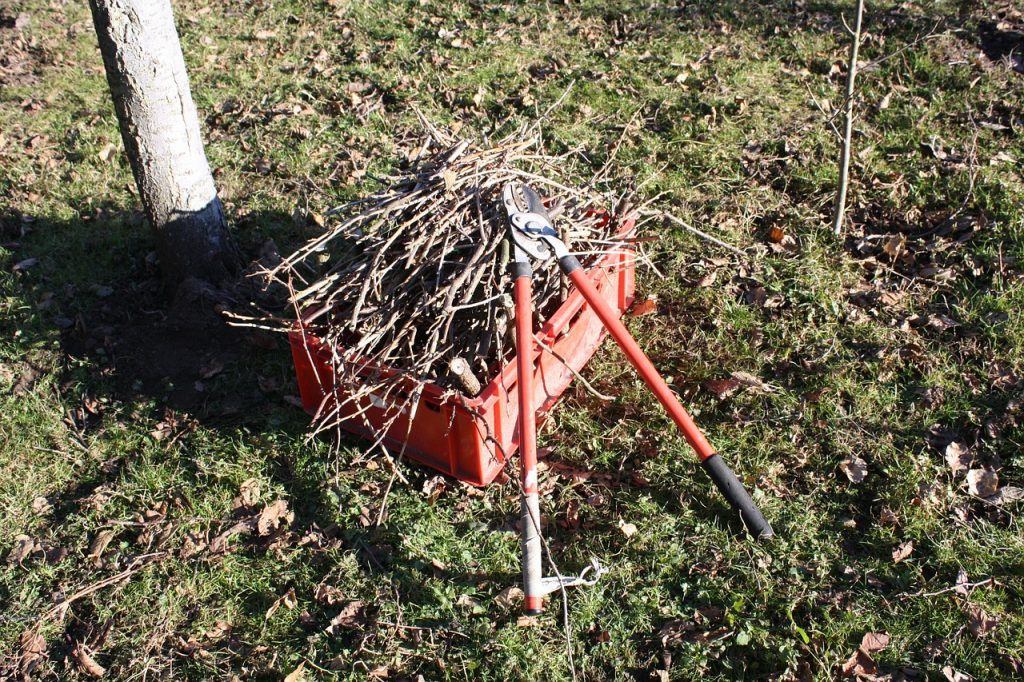To enjoy beautiful greenery in your garden in spring, you need to start work well in advance. In January plants are still in a state of vegetation, but simple maintenance work will allow you to preserve their beautiful appearance from before winter. The garden in winter does not require as intensive work as in spring or summer, but you can not neglect the plants during the winter months. Regularity in garden care is the key to success. See what work to do in January to reduce the workload in spring.

In January, you should get busy planning your work for warmer days. Consider where you want to locate your seedbed or plastic tunnels and make sure the ground in those areas doesn’t freeze. Cover your vegetable garden area with leaves or straw to protect it from hard frost. In January you can also, if the weather is good, harvest small crops of overwintering plants, such as kale, Brussels sprouts and parsley
In winter, it’s also a good idea to plan your crops for the current year. Take a look at the seeds that were left over from last year, check for moisture and mildew, and see if they are still suitable for sowing. Consider what crops you want to harvest in the spring and summer, and buy the right species. With a well-thought-out seeding plan, you can start growing vegetables in the first warm days of spring, so you’ll be the first to enjoy your harvest. If you’re planting in early spring, be sure to use a ground cover to protect your emerging plants from possible frosts.
Also check to make sure you have all the equipment, fertilizer, and pesticides you need for your crops. Go through your pots and make sure they are airtight and suitable for the types of vegetables you want to grow. See that all preparations have the proper expiration date and discard expired products. Replenish any missing equipment to make your job easier in the future
In winter, if snowfall is heavy, care should be taken to ensure that snow does not pile up on the branches of trees, conifers and shrubs. While fresh, powdery powder is light, when it begins to melt it becomes wet and very heavy. Twigs may not be able to bear this weight and begin to break. If a branch does happen to break, the damage should be treated as soon as possible with horticultural ointment to prevent the plant from becoming infected. On the other hand, if snow is scarce in winter, evergreen trees should be watered regularly. Water shortages in winter can lead to languishing and stunted growth
During frosty spells, check regularly to make sure that the wind has not destroyed the covers on your plants. If the winter was light, and frosts are forecast, it is worth to protect flowers and shrubs for this time with an agro-woven fabric or straw.
As with vegetables, it’s worthwhile to review your equipment and flower seeds and bulbs to see if you have everything you’ll need for spring work. We can also do a germination test of our own harvested seed, on damp cotton wool. If less than 50% of the seeds germinate, unfortunately you will need to buy them from the store. Also, preparing a plan for sowing annual flowers will help us remember the deadlines. In this way, we will not miss the moment to sow the right flowers to bloom and decorate our garden in spring and summer.
Winter in the orchard does not require much work. At the end of December and the beginning of January you should bleach the tree trunks with calcium oxide. At this time it is also worth inspecting the trees for parasites and pests. Although you do not carry out pest extermination in January, it is a good idea to mark the trees that will need spraying for the future. While inspecting your orchard, you may also notice damaged trees, in which case you should treat the wounds with horticultural ointment as soon as possible.
>> See also: Which plants should be sown in February?
January is still the time of vegetation of plants, but during this period we can take measures that will facilitate our garden work in the spring. Preparing the ground and devising a sowing plan will give us the assurance that vegetables and flowers will grow properly, while a review of gardening equipment will help to quickly fill any gaps. To make your garden a delight on warmer days it really is worth starting in January.